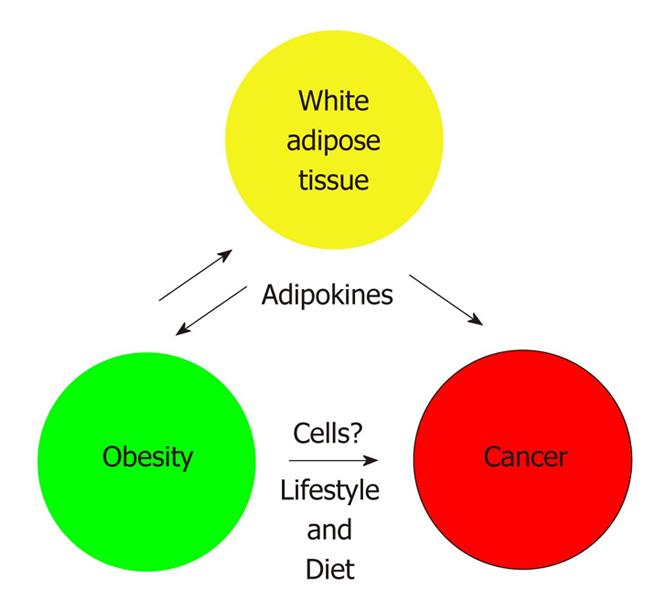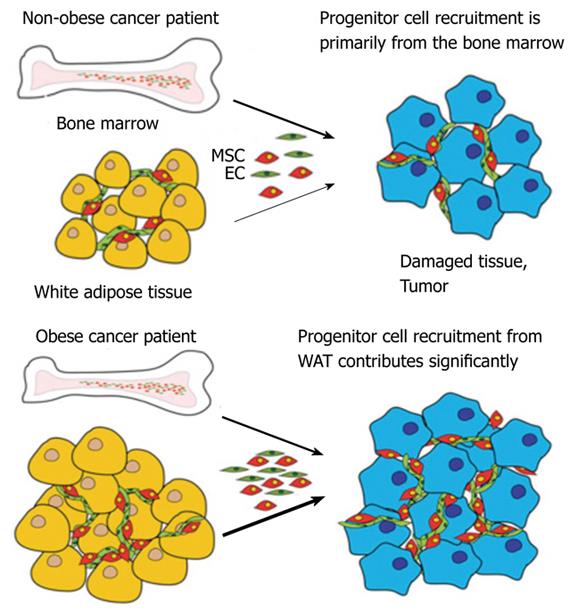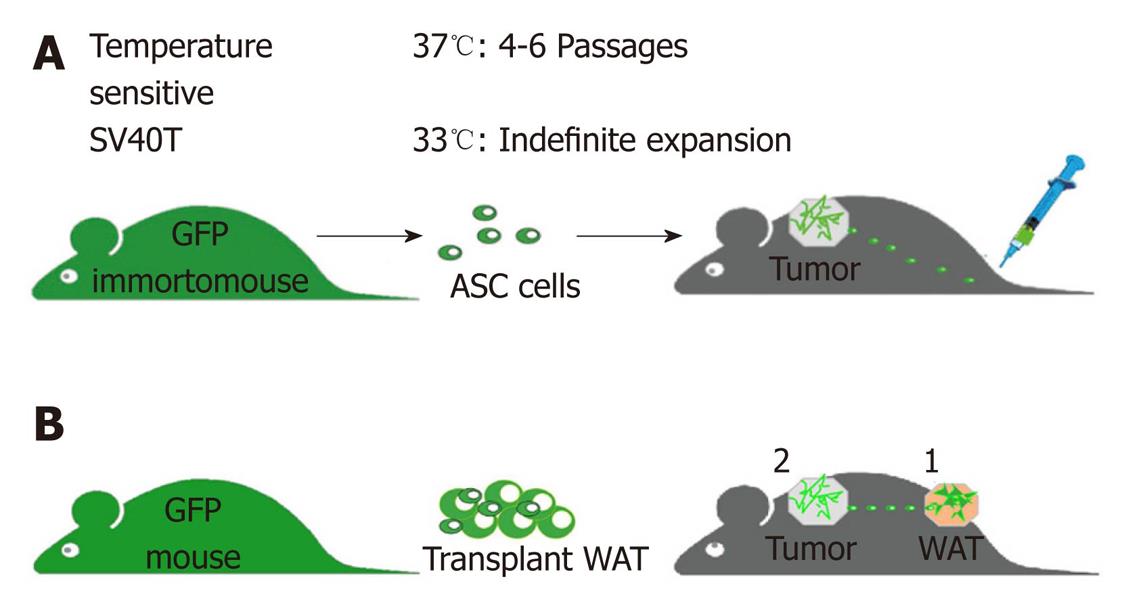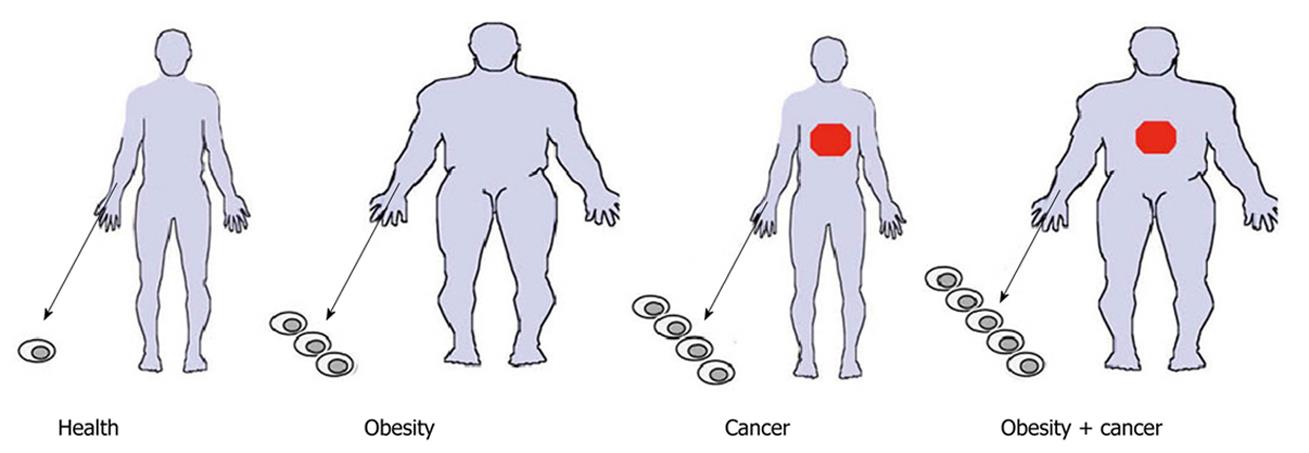Copyright
©2010 Baishideng Publishing Group Co.
World J Stem Cells. Oct 26, 2010; 2(5): 103-113
Published online Oct 26, 2010. doi: 10.4252/wjsc.v2.i5.103
Published online Oct 26, 2010. doi: 10.4252/wjsc.v2.i5.103
Figure 1 How does obesity promote cancer? In addition to obesity-associated lifestyle and diet which could influence cancer course, white adipose tissue (WAT) overgrowth may directly contribute to the pathogenesis of obesity and cancer progression.
Adipokines (soluble molecules secreted from WAT) have been proposed to play a role, but other mechanisms may also be important.
Figure 2 A model for the role of mesenchymal stromal cells of obese patients in cancer progression.
Arrow thickness depicts relative contribution of progenitor cells from bone marrow and white adipose tissue. WAT: White adipose tissue; MSC: Mesenchymal stromal cells; EC: Endothelial cells.
Figure 3 Design of experiments testing tumor homing of white adipose tissue cells and their effect on tumor growth.
A: metronomic green fluorescent proteins (GFP) + white adipose tissue (WAT) administration: cultured cells are sc-injected (lower back) using metronomic cell injection regimen (104 cells/d) into mice xenografted with human tumors (upper back). B: WAT transplants: GFP+ WAT is implanted (1) into lean mice prior to tumor grafting (2), which allows us to track recruitment of implant-derived cells by tumor and to measure the resulting effect on cancer progression. Tumor growth is compared to that in control mice.
Figure 4 Increased circulation of white adipose tissue-derived cells in obese individuals? A hypothetical model predicts mobilization of adipose EC and MSC from residual adipose tissue into the peripheral blood, which may also occur in non-obese patients with cancer and is predicted to be the highest in obese cancer patients.
EC: Endothelial cells; MSC: Mesenchymal stromal cells.
- Citation: Zhang Y, Bellows CF, Kolonin MG. Adipose tissue-derived progenitor cells and cancer. World J Stem Cells 2010; 2(5): 103-113
- URL: https://www.wjgnet.com/1948-0210/full/v2/i5/103.htm
- DOI: https://dx.doi.org/10.4252/wjsc.v2.i5.103
















